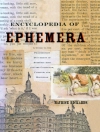The Sahel is a critical zone of convergence. Geographically, it links two oceans and three seas. Itself a semi-arid corridor, it functions as a giant dry river that traverses the central-north of Africa from coast to coast, demarcating the transition between the Sahara desert and the savannah. Across the land and the water came traders and adventurers seeking goods and power, bringing ideas, opportunities and challenges, sometimes, as with slavery, inflicting heavy damage upon flourishing institutions. Always rich in human diversity, bringing into contact North Africans and sub-Saharan Africans, West Africans and East Africans long before others came from outside the continent, in the Sahel cultures mixed, not always comfortably. And so they continue to mix even now. Indigenous religions met Islam, imported from the Arabian Peninsula, and Christianity from the Middle East by way of Europe.Often violent encounters across the Sahara between the largely animist indigenous Africans and Muslim Arabs from North Africa, the Mediterranean and the Arabian Peninsula significantly shaped and still animate the socio-political landscape of the region. The Sahel has been the focus of dreams of wealth and power for centuries, during which the objective of overthrowing existing forms of governance to usher out the invader or colonizer and usher in a new order that is solicitous of the welfare of the people has served as the motive for many revolutions and rebellions and is the case of many Sahel countries today.Against a background of seemingly unending encounters, from the Fossatum Africae (the African Trench) in time of the Roman Emperor Hadrian to today’s Mali, with powerful global currents which have often convulsed and created unwelcome dislocations in their society, the people of the Sahara-Sahel have found ways to adapt and cohere their indigenous systems to the new. This volume’s contributors illuminate the past with conscientious scholarship while bringing the reader’s pinpoint focus clearly into the present. Their work seeks new solutions to ongoing Sahelian problems that neither neglect the past nor are strictly limited to Sahelian applications. The chapters balance fear against hope: Fear that defenses against the ravages of climate change will be too little and too late; fear that help offered to former colonies will lead only to re-colonization; fear of lawlessness and exploitation by international criminal elements; fear of religious strife of heretofore unknown intensity on the African continent.And hope: Hope that African governments will work in unity to solve shared problems; hope that past indigenous methods of conflict resolution and agriculture, for example, can be brought to bear on present problems; hope that international cooperation with former colonizers and current investors can be achieved without domination and rebuild, as in the best of the past, a tolerant and flourishing society.
Pauline E. Ginsberg & Marcel Kitissou
Sahel [PDF ebook]
Sahel [PDF ebook]
Achetez cet ebook et obtenez-en 1 de plus GRATUITEMENT !
Format PDF ● Pages 192 ● ISBN 9781912234646 ● Maison d’édition Adonis & Abbey ● Publié 2014 ● Téléchargeable 3 fois ● Devise EUR ● ID 5395705 ● Protection contre la copie Adobe DRM
Nécessite un lecteur de livre électronique compatible DRM












